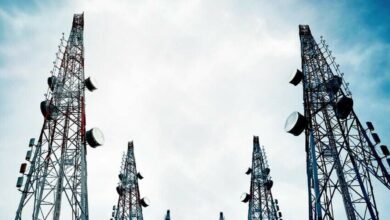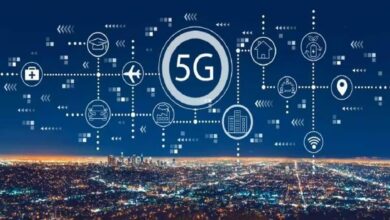What’s Impeding 5G inclusion in Pakistan

The next-generation mobile communication network (5G) is a heterogeneous network with a competitive edge in the field of wireless communication. The 5G network will provide users with an uninterrupted connection. In many developed economies, 5G is gaining traction. With reports of 5G network rollouts and the availability of 5G-enabled devices, both suppliers and operators have confirmed this view.
On the other hand, many emerging countries like Pakistan, are trailing behind. In Pakistan, obstacles include a low return on investment, a lack of discretionary income, and a lack of urgency when it comes to innovation. (National R&D investment in Pakistan, for example, is only 0.3 percent, compared to 0.8 percent in India and 2.0 percent in China.) These and other challenges make 5G deployment more difficult and interesting interesting at the same time. 3G/4G penetration is increasing at a remarkable pace.
According to statistics from the Pakistan Telecommunication Authority (PTA), the number of 3G and 4G subscribers has touched 106.68 million by the end of November 2021. But the potential for 3G/4G uptake is way more. Pakistan has a large population with decent financial growth potential, dynamic urban centers, the ability to quickly access suitable 4G/5G spectrum, and underdeveloped fixed-line infrastructure. Pakistan has a large population with decent financial growth potential, dynamic urban centers, the ability to quickly access suitable 4G/5G spectrum, and underdeveloped fixed-line infrastructure.
Importance of 5G in Pakistan
High-speed internet access, digital identity frameworks, and multi-sided platforms are the basis for successful digital citizenship, rich digital lifestyles, and global digital commerce in digital economies.
As part of the Fourth Industrial Revolution, mobile is at the heart of Pakistan’s national development strategy and progress along the digital society route, helping to bridge connection gaps, improve financial inclusion, and sustainably change verticals. Pakistan’s mobile sector is large and growing in importance. It is a significant contributor to the economy and is changing the way people, corporations, and government entities operate and communicate.
5G is significant not just because it can handle millions of devices at ultra-high speeds, but also because it has the potential to change people’s lives all over the world. Access to 5G technology has the potential to improve mission-critical services that influence today’s safety and security. The government is implementing exemplary measures for early digital inclusion and timely adoption of cutting-edge technology, leading to the socio economic well-being of our people, with the belief of transforming Pakistan into a “knowledge-based economy.”
Pakistan, not Ready for 5G The World Bank report commissioned by the Ministry of Information Technology and Telecommunication was aimed at examining Pakistan’s readiness for 5G. The final report, “Pakistan: Telecommunications Advisory Assistance, 5G Readiness Plan for Pakistan”, stated that Pakistan’s current telecommunications market has been analyzed to determine readiness for 5G through comparison with neighboring countries and global benchmarks.
The findings of these reports were extremely in contrast to Pakistan’s ambitious 5G plans for 2023 and prompted a whole new debate on MoITT’s performance. According to the World Bank,Pakistan is not yet 5G ready because there are several factors to address to facilitate market readiness.
Including a lack of large contiguous blocks of affordable spectrum, broader access to fibre backhaul, and widespread availability of affordable 5G smartphones and other devices, all of which are necessary preconditions for success.
According to the World Bank,
Pakistan is not yet 5G ready
Despite years of 5G preparation we still have to overcome a number of issues so that the 5G era could ultimately begin in Pakistan. There are a number of issues that are not being met in practice as predicted theoretically. Coverage area, spectrum efficiency, latency, interference, energy efficiency, and power consumption are some
of the problems.
There are a number of issues that
are not being met in practice
as predicted theoretically.
Coverage area, spectrum
efficiency, latency, interference,
energy efficiency, and power
consumption are some of the
problems
IMT spectrum management policy
Pakistan’s IMT spectrum management policy as being the key factor that has held back the sector in fully investing in 4G deployment and sector competition. Furthermore, IMT Spectrum has been priced such that only the market leaders can afford to participate, further hindering Pakistan’s 5G-readiness.
Assistance for MNOs
To start and expand their services, mobile operators want efficient auctions, low licensing costs, and some amount of future assurance. As a result, government and regulator must establish a medium to long-term spectrum plan, update it on a regular basis, and guarantee that operators successfully employ it.
Further to that, authorities should also try reducing spectrum prices to allow the MNOs to concentrate on service rollout and 5G ecosystem development in Pakistan. Mandated 5G coverage and QoS levels should also be kept at reasonable levels, handsets and data taxes to be removed or at least minimized to facilitate the rapid adoption and uptake of services, and fibre proliferation to be done urgently along with a plan to enhance wireless backhaul frequencies.
Government and regulator
must establish a medium to
long-term spectrum plan,
update it on a regular basis,
and guarantee that operators
successfully employ it.
RoW leases
Leasing RoW assets may be a lucrative method to augment your income, especially in countries where there is a lack of either an investment-friendly national RoW policy or its execution or both. Pakistan is in a similar scenario since it lacks a strong tariff and legislative restrictions on fiberlaying rights of way.
Quality of Service
There are two causes for Pakistan’s low network performance: (1) The regulator’s thresholds and benchmarks in the 3G/4G licenses of operators were kept low.
For 3G and 4G customers, operators must only maintain data speeds of 256 kbps and 2 Mbps,
respectively. (2) The majority of users are more concerned with money than with service quality. The low ARPU in Pakistan demonstrates this: in 2Q19, Telenor’s Pakistan branch had an ARPU of only 12 NOK, less than half of Telenor Myanmar’s 25 NOK/month. Therefore, MNOs must make trade-offs between coverage and capacity. These two variables have a direct influence on KPIs (key performance indicators) including voice quality and, data rates among other things.
Market Readiness
Only high-end imported phones come with 5G connectivity such as Samsung Galaxy S22 ultra, iPhone 13 Pro, Xiaomi 11T pro, etc. Low-budget phones do not have 5G connectivity and most of the people in Pakistan have low-budget phones. Most of the phones that are being manufactured in Pakistan are mainly 2G as well. Hence, before starting the 5G services, there is a strong need to create a 5G device ecosystem. So, when the 5G services finally start, people could quickly switch to the 5G network.
The 5G is in an emergent stage of development in most countries, yet the debate is escalating over the lucrative rollout of the the technology which is the new global wireless standard. This is very challenging for the governments of developing countries. The aspects that have contributed to the cost-effective rollout of the 5G technology amounts to standardization of LTE, enhanced spectrum efficiency, and allocation of additional spectrum.
before starting the 5G services,
there is a strong need to create a
5G device ecosystem
The Digital Pakistan drive, which started in 2018, aims to promote connectivity, improve digital infrastructure, increase investment in digital skills, and promote innovation and technology entrepreneurship. Pakistan though believing in digitization as a pillar of growth has yet to materialize on 4G LTE and existing spectrum auction.
The Digital Pakistan drive, which started in 2018, aims to promote connectivity, improve digital infrastructure, increase investment in digital skills, and promote innovation and technology entrepreneurship. Pakistan though believing in digitization as a pillar of growth has yet to materialize on 4G LTE and existing spectrum auction.
Pakistan though believing in
digitization as a pillar of growth
has yet to materialize on 4G LTE
and existing spectrum auction
PTA Taxes Portal
Find PTA Taxes on All Phones on a Single Page using the PhoneWorld PTA Taxes Portal
Explore NowFollow us on Google News!





